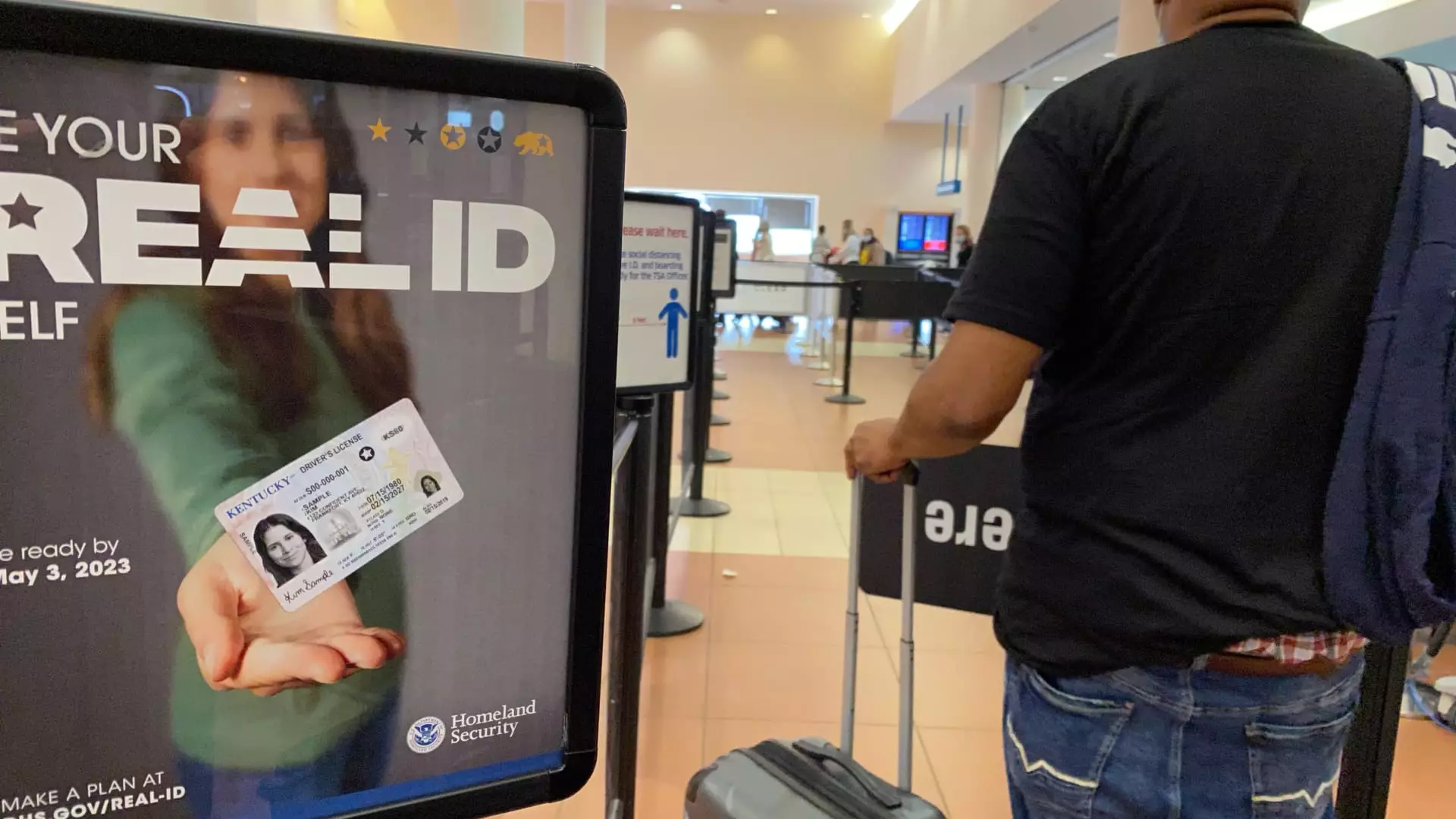As we inch closer to the moment of truth, May 7 looms large on the horizon—a date that signifies the much-delayed enforcement of the Real ID Act at U.S. airports. For travelers, this means navigating a labyrinth of bureaucratic requirements or risking being barred from flying. The federal government has made it abundantly clear: no Real ID-compliant identification, no boarding pass. But beyond the obvious chaos that this deadline might unleash at airport security lines, let’s delve deeper into several uncomfortable truths surrounding this policy.
The Reality of Compliance: Surprising Numbers
On the surface, it may appear that 81% of travelers already possess Real ID-compliant identification, but this figure raises more questions than it answers. What about the remaining 19%? It is naive to dismiss this significant minority as mere outliers—these are individuals who might find themselves scrambling at the last minute to secure their IDs. Many states have lagged behind in issuing compliant IDs, creating a patchwork of chaos across the country. This disparity doesn’t just affect those unprepared, but also the efficient flow of travelers who have responsibly adhered to the law.
The urgency to make appointments at motor vehicle departments is heightened, yet reports of scarce availability have surfaced. With the TSA urging people to act “now as quick as possible,” one has to wonder: why was there such a lack of foresight in planning for this implementation? Good policy should foster compliance, not create anxiety and potential chaos.
Bureaucratic Overreach: A Case of Misplaced Priorities
The Real ID Act was conceived in the wake of the tragic events of September 11, 2001, ostensibly as a security enhancement. Yet, one cannot overlook the lingering sense that a genuine effort to ensure traveler safety has morphed into bureaucratic overreach. Why is it that law-abiding citizens are constantly subjected to increasingly detailed verification processes, while those with ill intent can find ways to evade these restrictive measures?
Instead of simplifying the identification process, the government has opted for an elaborate system that punishes the compliant majority. Not only does this signify a troubling shift in how we view personal freedom, but it also lays bare an unsettling irony: we may be less safe in a system channeling resources away from genuine security concerns and into compliance checks.
The True Costs: More Than Just Waiting in Lines
The stakes are high—literally. The TSA has recommended passengers arrive three hours before domestic flights if they do not possess a Real ID. Three hours! This level of inconvenience is not merely a logistical nightmare; it has real economic implications. For business travelers, each minute wasted in line translates to lost productivity and revenue, affecting not just individuals, but entire companies that rely on efficient travel. When the government’s misguided efforts to enhance security become a hindrance to economic activity, we must question whether these measures truly serve the public good.
Can Alternative IDs Save Us? What Are We Missing?
The TSA acknowledges that alternatives exist: a U.S. passport, a permanent resident card, or a trusted traveler ID all qualify for boarding. However, these alternatives come with their own sets of challenges. Obtaining a passport can be a time-consuming and expensive affair, especially for those who do not travel frequently. In a society that prides itself on being mobile, shouldn’t a driver’s license—the most common form of identification—be enough? Why penalize the everyday citizen when more efficient solutions could exist?
The absence of a streamlined process that permits various forms of identification undeniably leaves room for errors and confusion, casting doubt on the system’s efficacy.
A Final Thought: Prepare for the Unexpected
As we brace ourselves for the May 7 deadline, the questions surrounding the Real ID requirement extend far beyond logistics. They touch upon personal freedoms, economic ramifications, and the effectiveness of government policies in creating a secure yet open society. Prepare now, but think critically about what these mandates mean for our future. The Real ID Act may officially become a requirement, but it raises extensive implications about how we govern ourselves in an age that demands security while still cherishing liberty.

